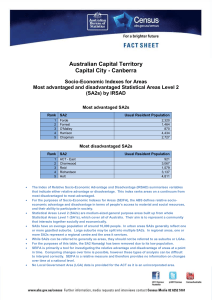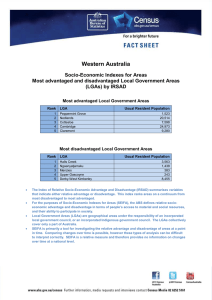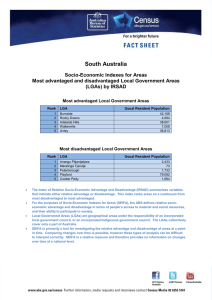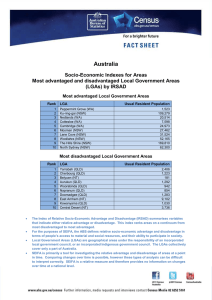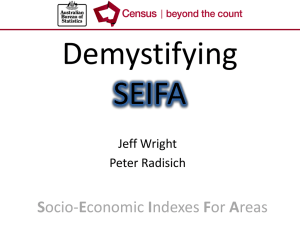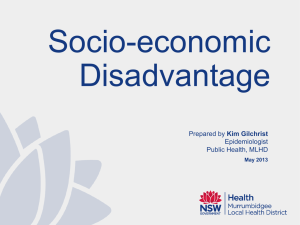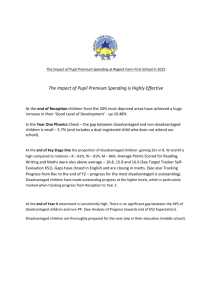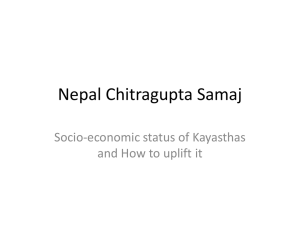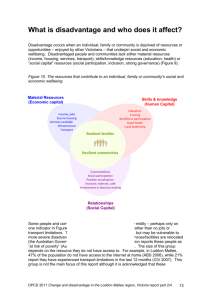Northern Territory
advertisement
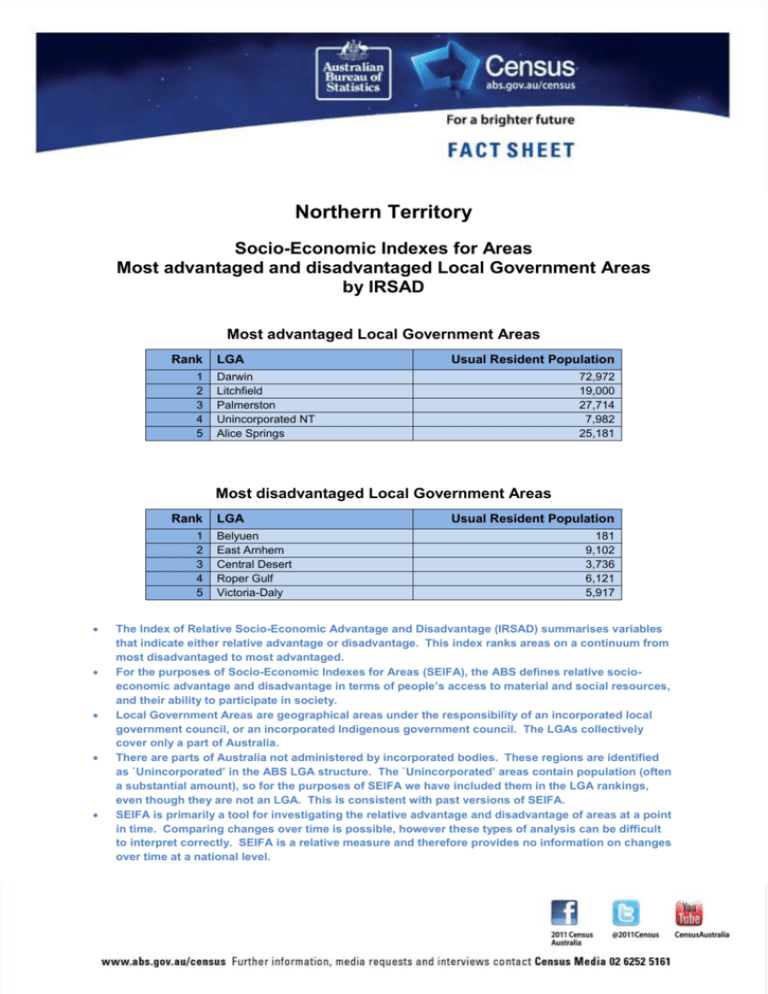
A Northern Territory Socio-Economic Indexes for Areas Most advantaged and disadvantaged Local Government Areas by IRSAD Most advantaged Local Government Areas Rank 1 2 3 4 5 LGA Usual Resident Population Darwin Litchfield Palmerston Unincorporated NT Alice Springs 72,972 19,000 27,714 7,982 25,181 Most disadvantaged Local Government Areas Rank 1 2 3 4 5 LGA Belyuen East Arnhem Central Desert Roper Gulf Victoria-Daly Usual Resident Population 181 9,102 3,736 6,121 5,917 The Index of Relative Socio-Economic Advantage and Disadvantage (IRSAD) summarises variables that indicate either relative advantage or disadvantage. This index ranks areas on a continuum from most disadvantaged to most advantaged. For the purposes of Socio-Economic Indexes for Areas (SEIFA), the ABS defines relative socioeconomic advantage and disadvantage in terms of people’s access to material and social resources, and their ability to participate in society. Local Government Areas are geographical areas under the responsibility of an incorporated local government council, or an incorporated Indigenous government council. The LGAs collectively cover only a part of Australia. There are parts of Australia not administered by incorporated bodies. These regions are identified as `Unincorporated’ in the ABS LGA structure. The `Unincorporated’ areas contain population (often a substantial amount), so for the purposes of SEIFA we have included them in the LGA rankings, even though they are not an LGA. This is consistent with past versions of SEIFA. SEIFA is primarily a tool for investigating the relative advantage and disadvantage of areas at a point in time. Comparing changes over time is possible, however these types of analysis can be difficult to interpret correctly. SEIFA is a relative measure and therefore provides no information on changes over time at a national level. A Northern Territory Capital City - Darwin Socio-Economic Indexes for Areas Most advantaged and disadvantaged Statistical Areas Level 2 (SA2s) by IRSAD Most advantaged SA2s Rank 1 2 3 4 5 SA2 Usual Resident Population Woolner-Bayview-Winnellie Durack-Marlow Lagoon Lyons Palmerston-North Rosebery-Bellamack 2,657 3,662 2,065 4,136 3,749 Most disadvantaged SA2s Rank 1 2 3 4 5 SA2 Moulden Gray Coconut Grove Karama Weddell Usual Resident Population 3,191 3,316 2,848 4,842 3,645 The Index of Relative Socio-Economic Advantage and Disadvantage (IRSAD) summarises variables that indicate either relative advantage or disadvantage. This index ranks areas on a continuum from most disadvantaged to most advantaged. For the purposes of Socio-Economic Indexes for Areas (SEIFA), the ABS defines relative socioeconomic advantage and disadvantage in terms of people’s access to material and social resources, and their ability to participate in society. Statistical Areas Level 2 (SA2s) are medium-sized general purpose areas built up from whole Statistical Areas Level 1 (SA1s), which cover all of Australia. Their aim is to represent a community that interacts together socially and economically. SA2s have an average population of around 10,000 people. In urban areas SA2s generally reflect 1 or more gazetted suburbs. Large suburbs may be split into multiple SA2s. In regional areas, one or more SA2s represent a regional centre and the area it services. While SA2s can be referred to generally as areas, they should not be referred to as suburbs or LGAs. SEIFA is primarily a tool for investigating the relative advantage and disadvantage of areas at a point in time. Comparing changes over time is possible, however these types of analysis can be difficult to interpret correctly. SEIFA is a relative measure and therefore provides no information on changes over time at a national level.
